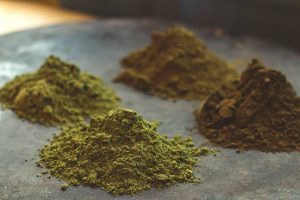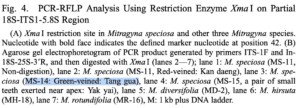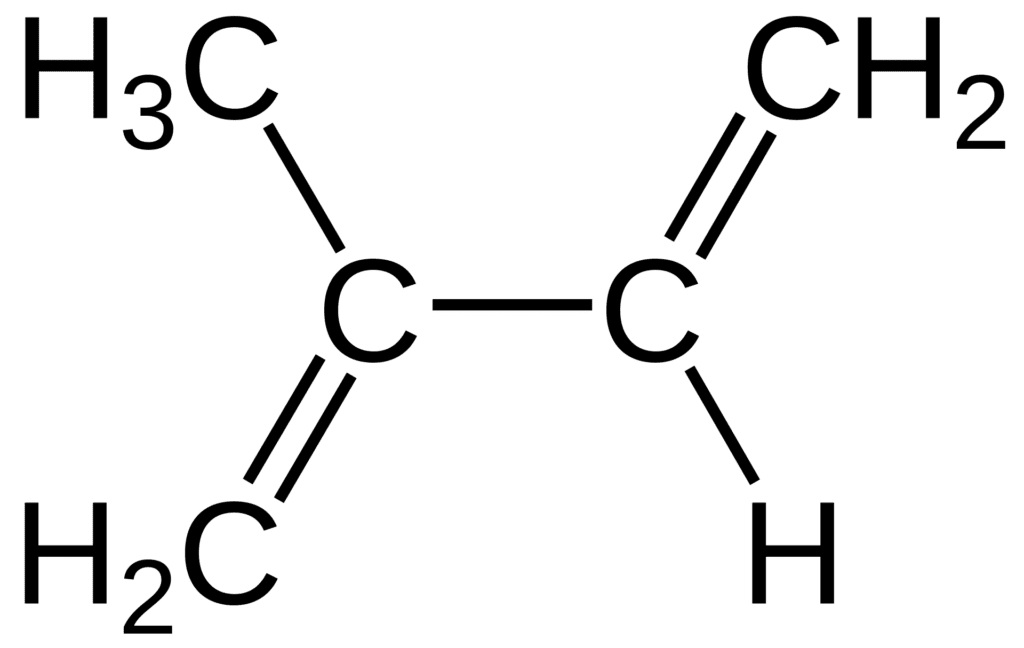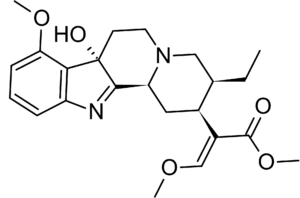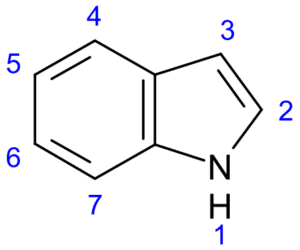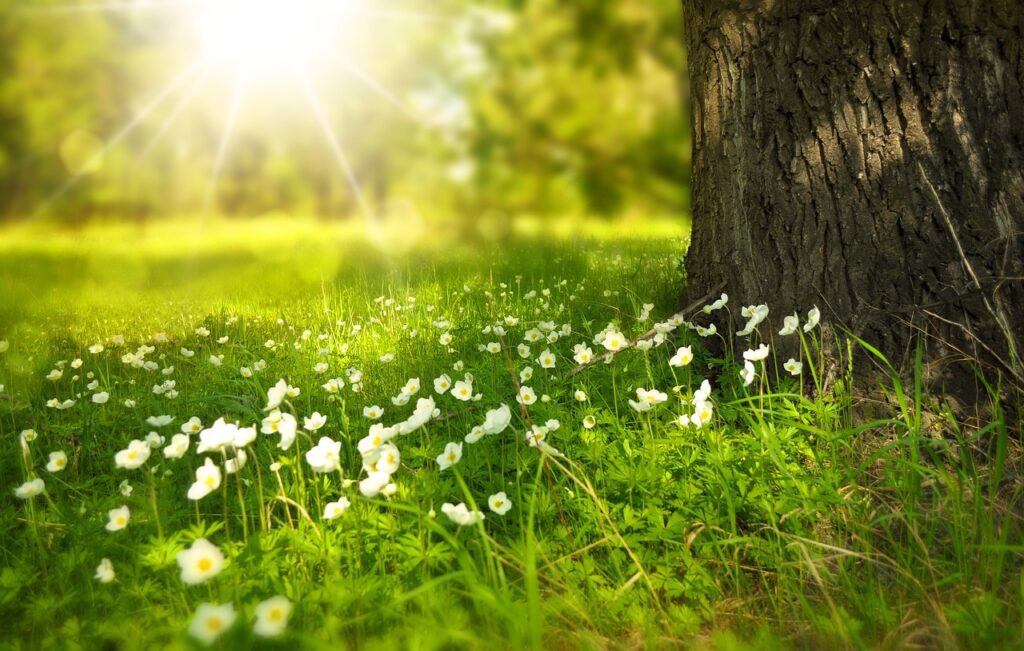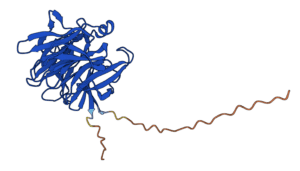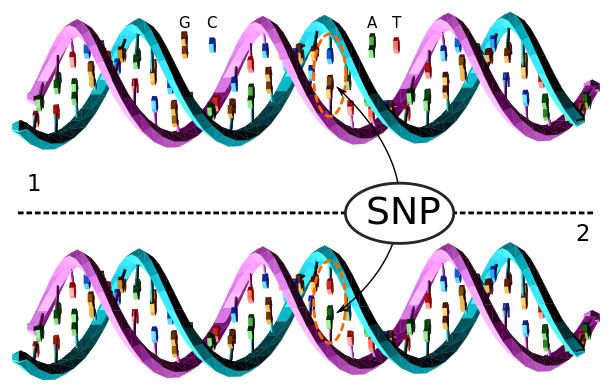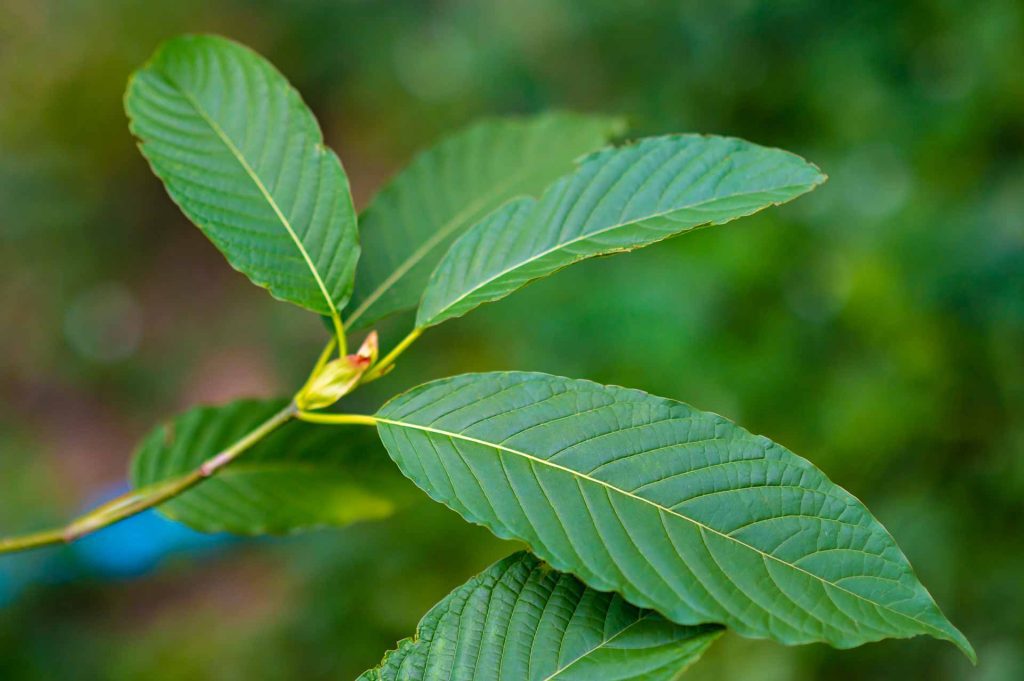In recent years, Kratom has gained a lot of attention due to its therapeutic potential and cultural significance. One aspect that remains intriguing is its unique vein colors, ranging from the familiar red, white, and green to the more rare yellow. There is an abundance of internet articles on the subject, but many of them offer similar and incomplete explanations. You may read two articles that make definitive statements about the nature and cause of kratom vein color, yet their claims contradict each other. Incorrect information is often mistaken for truth and many sources merely rehash the same content without delving deeper into the subject. A detailed exploration of the science of Kratom is essential to keep consumers well-informed.
The following article aims to dive deeply into the various factors influencing Kratom’s distinct vein colors, and the effects behind these veins. We will be exploring a wide range of topics, from genetic diversity and environmental conditions, to post-harvest processing and fundamental plant biology. This article is an honest attempt to uncover some of the complex processes shaping these colors. Through a journey into the life of the Kratom plant and analyzing the latest research, our goal is to clear up some of the ambiguity and provide a well-informed perspective on this subject. While the plant’s origin and development remain mysterious, we believe that our kratom vein color analysis is one of the most comprehensive available online.
The Effects of Kratom Vein Colors
Before embarking on the detailed scientific journey behind Kratom’s unique vein colors, let’s establish a foundational understanding of the effects associated with each color. Kratom enthusiasts and consumers often base their selections on these effects, so detailing the differences is key. Let’s take a glance at the three primary vein colors – White, Green, and Red – and the distinct experiences each one offers.
White Vein Kratom: The Energetic Vein
Primary Effects: Often dubbed the ‘energetic’ vein, white vein kratom is frequently chosen by those seeking a boost in energy and focus. It’s known for:
– Enhancing mood.
– Boosting energy and motivation.
– Stimulating for those that need a little get-up-and-go in their day.
Best For: Morning use, tasks requiring sustained focus, combating sluggishness , and as a potential replacement for caffeine-based products.
Green Vein Kratom: The Balanced Vein
Primary Effects: Green veins strike a balance between the stimulating effects of white and the relaxing properties of red, green vein kratom offers.:
– Moderate energy boost without overstimulation.
– Enhanced clarity and calmness.
– Uplifting and provides a sense of well being.
Best For: Daytime use, managing moderate discomfort, enhancing social interactions, and users new to kratom seeking a balanced experience. A clever rhyme to to remember is “green in-between.”
Red Vein Kratom: The Calming Vein
Primary Effects: Renowned for its calming and relieving effects, red vein kratom stands out for:
– Promoting relaxation and easing tension.
– Aiding in a sense of calm.
– Providing significant relief from discomfort.
Best For: Evening use, deep relaxation, for relief, and calmness.
Having set the stage with these introductory effects, our exploration will now delve deeper, examining the science and intricate processes behind these distinct vein colors and their associated properties.
Scientific Exploration of Kratom Veins
We’ve established that many online articles offer contradictory or superficial explanations about the vein colors of M. speciosa. But what about the scientific literature? Unfortunately, it doesn’t provide a definitive answer either. While numerous studies have investigated the vein colors, their results are often ambiguous and inconsistent. These inconsistencies emphasize the need for more precise and comprehensive research. The vein colors, which are frequently associated with the plant’s potency and effects, remain a topic of debate and exploration in the scientific community.
Suwanlert’s Observations in Thailand
The Suwanlert paper titled “A Study of Kratom Eaters in Thailand” provides specific insights into the vein colors of kratom and their effects:1
- Kratom leaves are categorized based on their vein color: red or white. The white vein is described as having a stronger effect.1
- The majority of the users in the study preferred a mixture of both red and white veins, while others preferred either the red or white vein exclusively.1
Molecular Insights by Sukrong et al.
The following sections show ambiguity on M. speciosa vein color classification within the paper titled “Molecular Analysis of the Genus Mitragyna Existing in Thailand Based on rDNA ITS Sequences and Its Application to Identify a Narcotic Species: Mitragyna speciosa” by Sukrong et al. :2
Materials and Methods Section
M. speciosa is categorized based on leaf morphology into three distinct types:
- Red-veining leaf (Kan daeng)
- White-veining leaf (Tang gua)
- A leaf with a pair of small teeth near the apex (Yak yai). This categorization was confirmed by experts from Chulalongkorn University.2
Table 1
Highlights “Tang gua” as “white-veined.2“
Figure 4 and Subsequent Sections
“Tang gua” is described as “green-veined”, presenting a clear inconsistency.2
Identification of a Narcotic Species, Mitragyna speciosa by PCR-RFLP Method section
The paper acknowledges the presence of a green vein type, further adding to the confusion given the earlier categorization of “Tang gua” as “white-veined“.2
Discussion
In the discussion section the authors suggest that the green-vein type is thought to have a stronger effect than the red-vein type.2
Discrepancy with the Suwanlert Paper
- The Sukrong paper references the Suwanlert paper when discussing the potency of the green-veined type over the red-veined type.2
- Contradictorily, the Suwanlert paper categorizes kratom leaves into two primary vein colors: red and white, emphasizing the white vein as having a stronger effect. There’s no mention of a “green-veined” type in the Suwanlert paper, so the reference creates confusion.
Alkaloid Variation Study by Sengnon et al.
The study by Sengnon et al. titled “Seasonal and Geographic Variation in Alkaloid Content of Kratom (Mitragyna speciosa (Korth.) Havil.) from Thailand” delves into the difference in alkaloid production between red-veined and green-veined kratom.3 Key findings include:
- Alkaloid production is similar in both red-veined and green-veined kratom leaves, with no significant differences observed.3 It’s important to note that this study only tested three alkaloids: mitragynine (MG), paynantheine (PAY), and speciogynine (SG), while Kratom is known to host more than 40 alkaloids.
- Green-veined leaves have a larger population than red-veined leaves. However, the samples were collected within Thailand and most of the Kratom trees were household grown.3 This information may not be applicable to wild grown Kratom, or to Kratom trees that reside outside of Thailand.
- The color of the leaf veins might be influenced by soil type, nutrients, and the developmental stage of the leaf rather than distinct genetic differences.3
Kratom Varieties: Insights from Ngernsaengsaruay, C. et al.
The paper titled “Additional Knowledge on the Genus Mitragyna (Rubiaceae) in Thailand” provides further insights into the vein colors of kratom and their potential causes:4
Types of Kratom Based on Vein Color and Morphology:
The paper references reports from the Narcotic Crops Survey and Monitoring Institute, Office of the Narcotics Control Board, Ministry of Justice (2019), Royal Institute (2003), and local people in southern Thailand. They reported three distinct types of kratom, Mitragyna speciosa:
- Kan daeng: Characterized by red veins and petioles.
- Kan khiao (taeng kwa): Characterized by pale green veins and petioles.
- Hang kang (yak yai): Noted for the apical part of leaves being unevenly dentate with larger leaves.
Observations on Vein Color Variation
- The authors’ field observations suggest that the difference in vein color is dependent on the age of the leaves. Both red and green veins (and petioles) can be found on the same plant. Specifically, young leaves, especially the midrib and secondary veins, are reddish in color, transitioning to green as they mature.4
- The study also observed that the apical part of leaves can be unevenly dentate or not dentate within the same plant.4
- The researchers express uncertainty about concluding that M. speciosa has three or more varieties. They lean towards the belief that the observed differences are infraspecific variations rather than distinct varieties.4
Summarizing Key Scientific Findings
The scientific literature concerning the vein colors of M. speciosa, commonly known as Kratom, presents a complex and at times contradictory picture. The Suwanlert study distinguishes between red and white vein colors, noting the white vein’s stronger effect. However, the Sukrong study adds layers of complexity, offering three classifications: Red-veining leaf (Kan daeng), White-veining leaf (Tang gua), and a leaf with distinct apical characteristics (Yak yai). Interestingly, the Sukrong paper later presents “Tang gua” as “green-veined,” diverging from its earlier categorization and adding to the confusion. Further, while referencing the Suwanlert paper, the Sukrong study implies a stronger effect for the green-veined type, a notion absent in Suwanlert’s findings.
Sengnon et al. discusses the idea that vein color might be influenced by environmental factors, such as soil type and leaf maturity. Ngernsaengsaruay et al. build on this, suggesting that vein color changes with leaf age, and that these variations might not represent distinct species or sub-species, but rather infraspecific variations.
Given the discrepancies and diverse interpretations within these studies, it’s evident that more rigorous and consistent research is needed. Currently, the precise classification of kratom vein colors remains unclear in scientific studies.
Supplier Insights: Kratom Vein Colors, Processing, & Tree Characteristics
After examining the scientific literature on Kratom vein colors, we found a range of interpretations and occasional contradictions. To get a better understanding, it’s also essential to consider the hands-on experience and insights of suppliers and farmers.
Over the years, we’ve fostered a close relationship with one of our seasoned farmers from Indonesia, who exclusively harvests wild-grown Kratom across all regions of Borneo. The insights shared below are region-specific and primarily based on observations from Central Borneo. They offer a unique perspective that complements the scientific research.
Kratom Leaf Vein Colors: Insights from Central Borneo
In the forests of Central Borneo, the age of the Kratom leaf is a primary determinant of its vein color:
- Young Leaves (10 days – 1 month): These leaves are small and thin. Their vein color predominantly leans towards red, but there are instances where it can be mixed with white.
- Middle-aged Leaves (1-3 months): As the leaves mature, they thicken and become medium-sized. The vein color is a mix of red and white, with white being the more dominant color.
- Older Leaves (3 months and above): These leaves are slightly larger and thicker than the middle-aged ones. The dominant vein color is green, but white is also present.
- Very Old Leaves (5-6 months): In their final cycle before falling off, these leaves reduce in size but become considerably thicker. The vein color is primarily white, with hints of green.
Interestingly, he suggests that while vein color is notable, Kratom’s classification might be more meaningful based on its growth region. This is because the taste of the leaf can vary significantly between regions, hinting at potentially different subspecies. This perspective aligns with the scientific belief that environmental factors, such as soil type and leaf maturity, may influence leaf morphology. While this is a compelling proposition, it’s worth noting that current research hasn’t yet confirmed these intraspecific variations.
Kratom Powder Color and the Drying Process
The final color of kratom powder is influenced by specific drying techniques:
- Green Kratom: Achieving the vibrant green hue in kratom powder requires specific drying conditions. Leaves need to be dried within a single day if exposed outdoors. Alternatively, if drying is done indoors, it’s essential to ensure the leaves are dried thoroughly with good ventilation.
- White Kratom: The light shade of white kratom is obtained in one of two ways. Leaves can be dried under direct sunlight for a period of 2 to 3 days. Another method involves a fermentation process.
- Red Kratom: The distinct red color of the kratom powder is primarily a result of fermentation. The process involves placing freshly harvested kratom leaves in a plastic bag, sealing it, and then allowing it to sit for several days. The duration of the fermentation process directly influences the depth of the red color; the longer the fermentation, the darker the red. It’s worth noting that if one were to dry genuinely red-veined kratom leaves without this specific drying process, the resulting powder would still be green. This is because, despite the red veins, the overall leaf color remains green. Producing red powder solely from red veins appears to be a challenge.
An interesting hypothesis is whether leaves with naturally red veins transition to a red hue more rapidly during fermentation than green or white-veined leaves. Could it be that these red-veined leaves, when processed, manifest the red coloration more quickly and effectively? This may suggest that both the leaf’s inherent characteristics and the fermentation process play roles in determining the final color of red Kratom. It would be an easy and interesting experiment for suppliers to test this idea.
Regional Specificity and Implications
The insights shared here pertain to Central Borneo trees, specifically observations regarding leaf vein variation by age. They also cover the subsequent drying process. Kratom trees from other regions, like Bali, or from different countries altogether, such as Thailand, might exhibit different characteristics. Different subspecies, influenced by their unique environments, could have varying vein colors and processing outcomes.
The combination of scientific literature and empirical knowledge from suppliers gives us a more comprehensive understanding of Kratom. While the observations from Borneo offer a detailed snapshot, it’s essential to approach them with the understanding that they are based on empirical observations and are region-specific. These observations, especially concerning the wild-grown Kratom of Borneo, provide a unique perspective and emphasize the need for a holistic, evidence-based approach to understanding the Kratom plant.
Kratom’s Phytochemical Dynamics
Kratom (Mitragyna speciosa) contains a diverse array of phytochemicals, with alkaloids taking center stage. While light exposure plays a significant role in shaping Kratom’s chemical makeup, it’s only one piece of a larger puzzle. Environmental conditions, coupled with the plant’s internal mechanisms, moisture content, and cellular stability collectively determine its phytochemical profile. This section offers an exploration into the complex world of plant biology and phytochemistry, using these foundational principles to understand the influence of light and other factors on kratom vein color.
Diagram of Photosynthesis. Photosynthesis is a fundamental chemical process that occurs in virtually all plants, as well as in algae and certain bacteria.13
Understanding Cell Damage
While light is a driver of photosynthesis, an overabundance in the form of high-intensity sunlight can be detrimental. Excessive light can cause physical damage to the plant cells. When intense light exceeds the plant’s capability to use it for photosynthesis, it can lead to the generation of reactive oxygen species (ROS), promoting oxidative stress. This stress can impair cellular structures, such as the cell wall, membrane, and organelles. As these structures get disrupted, it goes through a process known as cell lysis. Cell lysis refers to the breakdown or rupture of a cell’s outer membrane, leading to the release of its internal components, such as proteins, DNA, and RNA into the surrounding tissue or extracellular space. This can lead to further damage by the interaction of the internal components with various enzymes and ROS. Due to the loss of specific phytochemicals, the effects of oxidative stress, and the interactions among compounds and macromolecules, plants may exhibit changes in their coloration.
Light & Moisture Content
The relationship between light and moisture content in Kratom is of prime importance. Light, particularly the intense rays of the sun, can drastically elevate the temperature of the kratom leaves during the drying process. This increase in heat causes the moisture within the leaves to evaporate more quickly. The rapid drying might be advantageous from a preservation and storage viewpoint, as it minimizes the potential for mold and bacterial growth. However, this hasty process can have repercussions on the leaves’ phytochemical profile. As moisture rapidly exits the leaves, certain volatile compounds—many of which can be essential for Kratom’s aroma, color, and bioactivity—might be lost. Some of these volatile compounds could be terpenoids which play pivotal roles in aroma and potential protective mechanisms.
Chlorophyll
Chlorophyll is pivotal for photosynthesis, where plants convert light energy into chemical energy to nourish their growth. At its core, the function of chlorophyll is to absorb light—predominantly sunlight. By doing so, it captures specific wavelengths from the blue and red portions of the electromagnetic spectrum while reflecting green light, giving plants their characteristic green color.
A close-up view of a chloroplast, the cellular powerhouse where chlorophyll resides and facilitates the process of photosynthesis in plants.
Extended exposure to direct sunlight or intense artificial light during the drying process could degrade chlorophyll. This degradation may be relevant in post-harvest processing as the reduction of chlorophyll would influence the final color of the kratom leaves.
Alkaloids
Alkaloids are a diverse group of organic chemical compounds, primarily characterized by the presence of nitrogen atoms. These compounds naturally occur in a vast number of plants and have captured scientific interest due to their pharmacological activity. Their interactions with human physiology are varied and complex, and as a result, many alkaloids have been extensively researched to understand their effects on the human body.
Chemical structure of mitragynine, a primary alkaloid found in kratom (Mitragyna speciosa) leaves, central to its pharmacological properties and unique effects.
In the world of plants, alkaloids often serve protective roles. Due to their bitter taste or potential toxicity, they deter herbivores and pests from consuming the plants. These compounds are an essential component of the plant’s defense mechanism against potential threats.
In the context of Kratom (Mitragyna speciosa), alkaloids are significant as they are directly responsible for the bulk of kratom effects. Kratom’s two primary and most studied alkaloids are Mitragynine and 7-hydroxymitragynine. However, it’s essential to note that the plant contains over 40 identified alkaloids, each contributing in its own way to the plant’s overall profile. This alkaloid content can vary based on several factors, from the plant’s age, environment, & genetics to the post-harvest processing it undergoes.
Alkaloids and Plant Pigments
pH Level Changes
The concentration of certain alkaloids could influence the pH level within the plant cells. In many plants, slight changes in pH can cause shifts in color. This is because many pigments, including anthocyanins (responsible for red, purple, and blue colors in many plants), change color based on the pH level. If the alkaloid content impacts the cellular pH, it could indirectly influence the kratom vein color.
Photoprotection and Light Interactions
Some alkaloids may have photo-protective properties, shielding the plant’s cells from harmful ultraviolet (UV) radiation. If these alkaloids are present in higher concentrations, they could protect other pigments in the leaf from UV-induced breakdown. This preservation could result in a more vibrant and long-lasting color in the Kratom veins.
Direct Color Contribution
Alkaloids in various plants, like berberine, directly contribute to the color of the plant tissues due to their inherent pigmentation. If similar alkaloids are present in Kratom, they would directly influence its vein colors. However, as of now, specific evidence linking kratom alkaloids to direct coloration is limited.
Other Phytochemical Interactions
Alkaloids might interact with other phytochemicals such as flavonoids and terpenoids, which also play roles in plant pigmentation. These interactions could either enhance or suppress the expression of pigment producing proteins, or directly affect the biosynthesis of specific pigments.
Terpenoids and Flavonoids
Kratom, like many plants, is a rich source of not only alkaloids but also flavonoids and terpenoids. Each of these compounds play specific & vital roles in the plant’s physiology and interaction with its environment. These compounds are known to be influenced by light conditions in various plants.
Terpenoids
Terpenoids, sometimes referred to as isoprenoids, are multifaceted molecules primarily known for their aromatic properties in plants. While they share structural similarities with terpenes (known for being major components of the cannabis plant), terpenoids are chemically modified with additional functional groups. The core structural unit of both terpenes and terpenoids is the isoprene unit. Terpenoids in plants are synthesized via two main pathways: the mevalonic acid (MVA) pathway occurring in the cytosol, and the MEP/DOXP pathway taking place in the chloroplasts.
Terpenoids serve several functions in plant biology. They serve as growth regulators, signaling molecules, and are instrumental in the plant’s defense against herbivores and pathogens. Due to their volatile nature, they facilitate plant-plant communication and are essential in attracting pollinators. While many terpenoids are colorless, some can be colorful. When plants, including Kratom, are exposed to varying lighting conditions, this can alter the composition and concentration of their terpenoids. Such shifts not only influence the plant’s aroma but could potentially alter its interactions with the environment and other organisms.
In Kratom, specific triterpenoid saponins such as Quinovic acid 3-O-β-D-quinovopyranoside and Quinovic acid 3-O-β-D-glucopyranoside have been identified in the leaves of Mitragyna speciosa grown at the University of Mississippi.1 Triterpenoid saponins are a subclass of saponins, which are naturally occurring plant glycosides characterized by their soap-like foaming properties. Their structure usually comprises a hydrophobic triterpenoid core, which repels water, paired with one or more hydrophilic sugar moieties that attract water. This composition allows them to interact with both lipids (oils and fats) and water. It’s interesting to note that while 7-hydroxymitragynine is classified as an indole alkaloid, its synthesis involves terpenoid building blocks.
3D Model of Quinovic acid 3-O-β-D-quinovopyranoside found in Kratom leaves.
Chemical Structure of Isoprene, the core structural unit of terpenes and terpenoids.
Flavonoids
Flavonoids are a subgroup of polyphenols, well-researched for their antioxidant properties and role in plant pigmentation. The flavonoid epicatechin was identified in the leaves of Mitragyna speciosa grown at the University of Mississippi.1
Catechins are a type of flavan-3-ol, a class of flavonoids. The basic structure of catechins consists of two aromatic rings (A and B) and a heterocyclic ring (C) with a hydroxyl (OH) group. The difference between catechin and epicatechin is based on the hydroxyl group configuration on carbon 3 of the C-ring. In catechin, the two rings (A and C) are in a trans configuration, while in epicatechin, they are in a cis configuration.
It’s important to note that the discovered terpenoids and flavonoids were isolated from M. Speciosa leaves grown at the University of Mississippi, in the United States. These isolated phytochemicals may or may not be present in wild grown Kratom trees found in Southeast Asia.
In many plants, flavonoids act as a protective shield against ultraviolet (UV) radiation. When exposed to heightened UV light, plants often boost their flavonoid production, mitigating damage by absorbing and dissipating the harmful rays. This mechanism safeguards the plant’s DNA and other vital cellular components from UV-induced oxidative stress. Flavonoids are often responsible for the various colors of flowers, fruits, and leaves. As mentioned earlier, many of the colors we observe in the plant world (especially the reds, blues, and purples) can be attributed to anthocyanins, a subclass of flavonoids. The presence and intensity of these colors can be influenced by various factors including pH, light exposure, and the presence of other molecules.
7-Hydroxymitragynine as a Terpenoid Indole Alkaloid
Terpenoid indole alkaloids (TIAs) are natural compounds synthesized from L-tryptophan and isoprenoid building blocks. As discussed earlier, the terpenoid component commonly originates from the mevalonic acid (MVA) pathway or alternatively, from the non-mevalonate or MEP/DOXP pathway. A frequent intermediate in this process is geranyl pyrophosphate (GPP), which contributes to monoterpene formation and can be involved in TIA synthesis. Indole is produced via the shikimate pathway in plants from anthranilate. Indole is an intermediate in tryptophan biosynthesis.
When these two precursors combine, they form terpenoid indole alkaloids. An example of this synthesis can be observed in the Catharanthus roseus (Madagascar periwinkle) plant, which produces the TIA vincristine, a compound used in cancer therapies. 7-Hydroxymitragynine (7OHMIT) stands as a prominent terpenoid indole alkaloid in Kratom. 7-hydroxymitragynine is synthesized naturally as the oxidation product of mitragynine. The unique structure of 7OHMIT hints at a potential for diverse interactions within the plant.
The chemical structure of 7-hydroxymitragynine, hydroxylated version of mitragynine and one of the most potent alkaloids found in kratom.
Potential Terpenoid Interactions
7-hydroxymitragynine (7OHMIT) possesses terpenoid characteristics, suggesting potential interactions with the terpenoid components of the Kratom plant. Notably, the triterpenoid saponins identified in Kratom, such as Quinovic acid 3-O-β-D-quinovopyranoside and Quinovic acid 3-O-β-D-glucopyranoside1, could have specific interactions with 7OHMIT due to their unique structural properties. These saponins, with their amphiphilic nature, might influence the solubility and movement of 7OHMIT within the plant cells and tissues. This influence would affect how 7OHMIT interacts with other compounds and its role in the plant’s metabolic pathways.
Terpenoids are synthesized through complex pathways that involve multiple enzymes, each responsible for specific conversion steps. 7OHMIT could potentially interact with these enzymes, either by binding to their active/allosteric sites or by influencing their expression levels. Such interactions could lead to an increase or decrease in the synthesis of specific terpenoids.
For instance, if 7OHMIT may bind to an enzyme that catalyzes an early step in the terpenoid synthesis pathway. It can act as an inhibitor through direct binding to the active site(competitive inhibition), or by binding to an allosteric site, inhibiting the enzyme’s activity. This would reduce downstream terpenoid synthesis. Conversely, if it enhances the activity of such an enzyme via positive allosteric modulation, it would increase the production of certain terpenoids.
This illustration depicts the allosteric regulation process in an enzyme. Allosteric regulation refers to the modulation of an enzyme’s activity when an effector molecule binds to a location distinct from the enzyme’s active site. A represents the active site, B is the allosteric site, C denotes the substrate (molecule acted on by enzyme), D is the inhibitor, and E stands for the enzyme itself.
The presence and concentration of 7OHMIT in Kratom could play a pivotal role in modulating the terpenoid profile of the plant, influencing not just the aromatic and defensive properties but the coloration as well.
Potential Flavonoid Interactions
As mentioned in the previous section, the flavonoid epicatechin was identified in the leaves of Mitragyna speciosa grown at the University of Mississippi.5
Epicatechin and 7-hydroxymitragynine interactions can have significant biochemical implications. The potential π-π interactions between the aromatic rings of epicatechin and the indole component of 7-hydroxymitragynine could influence signal transduction pathways within the plant cells. Signal transduction pathways are essential for the plant’s ability to perceive and respond to environmental stimuli, and any alteration in these pathways can have cascading effects on the plant’s physiology.
These interactions might also play a role in modulating biosynthesis pathways. Phytochemical biosynthesis is a tightly regulated process, and any interference can lead to changes in their concentrations. For instance, if the synthesis or stability of epicatechin is affected, it could potentially influence the biosynthesis of other flavonoids or secondary metabolites in the plant.
The interactions between these compounds and larger biological macromolecules, such as proteins or nucleic acids, is worth exploring. For example, if epicatechin or 7-hydroxymitragynine binds to and modifies the function of a key enzyme involved in pigment synthesis, it could affect the physical characteristics of the plant. Such interactions could lead to changes in leaf texture, resilience, and most notably, leaf vein coloration. π-π interactions between the two compounds could alter either molecule’s ability to interact with the enzyme, affecting signal transduction or biosynthesis.
Figure shows a possible configuration of π-π interactions between an aromatic ring (benzene) and indole moiety. Such an interaction is theoretically plausible with epicatechin and 7-hydroxymitragynine. 14
Effects on Alkaloid Content
Central to alkaloid biosynthesis in M. speciosa is the synthesis of strictosidine, a precursor to various alkaloids including mitragynine. Key enzymes, notably Loganic Acid Methyltransferase (LAMT) and Strictosidine Synthase (STR), drive this process.6 If 7OHMIT modulates the activity of LAMT or STR, it would influence strictosidine synthesis and downstream alkaloid production.
The pathway leading to mitragynine synthesis involves several enzymes.6 As with the strictosidine synthesis enzymes, interactions between 7OHMIT and mitragynine enzymes could alter the concentration of mitragynine/mitragynine derivatives. A possible interaction could be with TDC (tryptophan decarboxylase), the enzyme that catalyzes the conversion of L-tryptophan to tryptamine. Tryptamine is a foundational precursor for many indole alkaloids.
Effects of Light Exposure on Secondary Metabolites
Plants produce a variety of secondary metabolites, substances that have no involvement in basic metabolic processes. These compounds are often involved in defense, attraction, or competition, and can have beneficial properties for humans. Alkaloids, terpenoids and flavonoids are all examples of SMs in plants. The synthesis, stability, and degradation of SMs are influenced by numerous factors, one of which is light exposure. This influence can be observed during both the plant’s life cycle and its post-harvest processing.
Light Exposure During the Life Cycle
As they grow, plants bask in sunlight, guiding a number of physiological processes.
Biosynthesis of Secondary Metabolites
Sunlight drives photosynthesis, enabling plants to produce sugars and other organic molecules. These molecules can then be used as precursors for various SMs. Light exposure type and intensity may influence which SMs are produced and in what quantities.
But it’s not just about photosynthesis. Embedded within their cellular machinery are photoreceptors – specialized proteins that detect specific wavelengths of light. Once activated, these photoreceptors can initiate a cascade of molecular events, eventually leading to the activation or suppression of genes involved in the SMs biosynthesis. For Kratom, these molecular signals might influence the synthesis of SMs such as alkaloids, thereby affecting its vein color and phytochemical profile.
Light Exposure During Post-Harvest Processing
After harvesting, plant materials often undergo processing steps, including drying. Light conditions during this phase can significantly impact the concentration of SMs.
Chemical Transformation
Prolonged exposure to direct sunlight or intense artificial light can transform SMs into different compounds. The UV component of sunlight, for example possesses the energy required to break chemical bonds in organic molecules. If the metabolites within Kratom are sensitive to UV exposure, their concentrations might decrease when the leaves are dried under direct sunlight.
A notable light-induced transformation can occur with the molecule β-carotene . In this process, light, especially UV radiation, can interact with β-carotene (found in carrots), breaking its structure and leading to the formation of various other products, which can lead to changes in the nutritional value of the plant material.
Light can cause some SMs to transform via isomerization, the process where a molecule transforms into its isomer, having the same chemical formula but a different spatial arrangement of atoms. This process can have varying effects on the overall properties of the plant material. A classic example is the transformation of trans-resveratrol, a health-promoting compound found in grapes, into its cis-form upon UV exposure.
Light-Mediated Isomerization of Resveratrol
Enzymes
Enzymes are the protein catalysts of life, & play a vital role in determining the chemical profile of plants. They speed up the rate of virtually all the chemical reactions that occur within cells. Without enzymes, these reactions would take place too slowly to sustain life. Their activity plays a primary role in both the biosynthesis and degradation of SMs. Light exposure, being one of the primary environmental factors influencing plant growth, can also affect enzymatic activity.
Biosynthetic pathway responsible for scaffold formation of mitragynine, showing key enzymes involved in the process. Enzymes are specialized proteins that speed up specific chemical reactions in an organism.15
Light can induce the production of specific enzymes or inhibit production of others. For instance, in some plants, light exposure can upregulate enzymes involved in the flavonoid biosynthesis pathway, leading to an increased flavonoid production. Conversely, enzymes responsible for the transformation of certain alkaloids might be downregulated, preserving these molecules.
Light can also directly affect enzymatic activity. Prolonged exposure to UV radiation, for example can damage enzymes by modifying their structure. Light can also activate certain enzymes, especially those involved in photosynthesis. For instance, the enzyme ribulose-1,5-bisphosphate carboxylase/oxygenase (RuBisCO), critical for carbon fixation in plants, is activated in the presence of light. Conversely, some enzymes may have reduced activity in intense light.
These light-dependent effects on an enzyme could lead to an increase or decrease of a precursor that’s essential for the synthesis of specific SMs in Kratom. This alteration in enzymatic activity may also interact with or accelerate the degradation of chlorophyll, leading to a direct change in the color of the leaves.
3D Structure of Strictosidine synthase, a key enzyme believed to be involved in mitragynine biosynthesis.6
Light exposure plays an important role in shaping the profile of SMs, both during a plant’s growth and post-harvest processing. It can influence biosynthesis, degradation, and transformation of compounds like alkaloids, terpenoids, and flavonoids. These SMs, in turn, contribute significantly to plant characteristics, including its color. SMs have been speculated to play a role in shaping kratom vein color, however it’s important to note that while these compounds have shown distinct roles in various plants or trees, their precise influence on Kratom’s vein coloration is still unknown at this point.
Phytochemical Dynamics in Kratom: Key Takeaways
Kratom’s chemical composition is influenced by environmental factors such as sunlight, moisture, and the drying process. While sunlight drives photosynthesis, excessive exposure can cause cell damage. This cell damage can lead to a host of effects, one being changes in phytochemical profile. The drying process can also affect the leaf’s color through chlorophyll degradation. Beyond its primary alkaloids, Kratom contains terpenoids, flavonoids, and enzymes that contribute to its aroma, color, and effects. These components have specific functions in plants, making Kratom a complex botanical product.
Genetic Diversity
One of the most fascinating aspects of plant biology is the influence of genetics on the visual characteristics of plants, including the beloved Kratom (Mitragyna speciosa). Genetic diversity is nature’s brushstroke, shaping the colors and unique properties of all living organisms. In plants, genes control everything from the size and shape of the leaves to their vein color.
The Basics of Plant Genetics
In general, genetic diversity in plant populations can result from a few key factors:
Mutation
The genetic variation in Kratom, as with other plant species, is due to the process of mutation and natural selection. When genetic mutations occur, they may introduce new traits into the population, which can then be subject to natural selection. Those traits that confer an advantage in survival and reproduction will likely become more common in the population over time. Changes in the DNA sequence of a gene can lead to new traits. If a mutation occurs in a gene controlling vein color, this could lead to Kratom trees with different vein colors.
Sexual Reproduction
Kratom trees, like many flowering plants, undergo sexual reproduction. A process central to this is genetic recombination. Genetic recombination involves the breakage and rejoining of DNA segments on chromosomes, leading to the formation of new allele combinations. This rearrangement of genetic material on chromosomes enhances genetic diversity, reflecting the inherent variability in DNA sequences among different organisms. As a result of this chromosomal shuffling, offspring can exhibit a range of traits.
Environmental Interaction
The expression of genes (i.e., how they manifest as physical traits) can be influenced by the environment – a concept known as gene-environment interaction. So, a Kratom tree might have the potential to develop any vein color, but whether it develops red, green, or white veins could depend on environmental factors like sunlight exposure, soil composition, and temperature.
Exploring the Genetic Landscape: Potential Insights into Kratom’s Vein Colors
Delving deeper into Kratom’s genetic landscape reveals the blueprints and evolutionary milestones that have shaped Mitragyna speciosa. Recent research has given us a clearer picture of Kratom’s genetic makeup.6 This newer understanding is more complete and accurate than previous studies, providing a solid foundation for investigating the mysteries of kratom vein colors.
Tetraploidy (Four sets of Chromosomes)
Every plant has sets of chromosomes carrying its genetic information. While most have two sets, Kratom stands out with four. 6 Tetraploidy refers to the presence of four sets of homologous chromosomes in a cell, as opposed to the typical diploid state which has two sets. In the context of plants, this means that instead of the usual two copies of each gene, tetraploid plants have four copies. This phenomenon can occur naturally, often as a result of errors during cell division, or it can be induced artificially.
The image displays sets of chromosomes in haploid (one set), diploid (two sets), triploid (three sets), and tetraploid (four sets) forms.
Relevance to Genetic Diversity
Tetraploidy can significantly boost genetic diversity. With four copies of each gene, there’s a greater chance for variations to arise and be maintained within the population. This increased genetic material provides a buffer, allowing mutations that might be detrimental in a diploid organism to be potentially harmless in a tetraploid one. As a result, tetraploid plants can exhibit a wider range of traits and have a higher potential for adaptability.
Expression of Traits in Kratom
For Kratom, being tetraploid means it has a larger genetic foundation for its traits. With additional copies of each gene, the potential for trait variations increases. These traits could include characteristics such as vein color, leaf shape, growth rate, and alkaloid content. This can lead to a more diverse range of phenotypes, or observable traits, in the population. For instance, while a diploid plant typically has two alleles for each gene (one from each chromosome set), a tetraploid Kratom plant can have up to four alleles. This could allow for a greater variety of genetic combinations and trait expressions.
Furthermore, the presence of multiple gene copies can lead to what’s known as gene redundancy. This means that while one gene copy is performing its regular function, another can undergo mutations without affecting the plant’s survival. Over time, this mutated gene can take on a new function, leading to the evolution of new traits. In plants like Kratom, this could mean the development of unique alkaloid profiles, resistance to certain pests, or, as mentioned, variations in vein colors.
Doubling of the Genome
In its journey through time, Kratom underwent a phase where its entire set of genes was duplicated.6 Genome duplication, or the doubling of an entire set of genes, is a significant evolutionary event. For Kratom, this event marked a divergence from its botanical relatives in the Rubiaceae family, notably from plants that would evolve into today’s coffee species (Coffea).6 This common ancestry and genetic divergence hints at an interconnected evolutionary path.
Decoding Kratom’s DNA: Exploring its Genetic Diversity in Thailand
A Glimpse into Genetics and SNPs
Genetics is the study of genes, their functions, and their patterns of inheritance. At its core, genetics delves into the DNA sequences found in every living organism. These sequences, often conceptualized as molecular blueprints, dictate how organisms grow, develop, and function. However, gene expression isn’t solely determined by the DNA sequences themselves. It’s governed by a combination of the DNA sequences, epigenetic modifications (changes to the DNA molecule or associated proteins that affect gene expression without altering the underlying DNA sequence), and environmental factors.
Variations in the DNA sequence can arise from alterations as minute as a single nucleotide change, known as Single Nucleotide Polymorphisms (SNPs). While many SNPs are located in non-coding regions and may not directly influence gene function or expression, others can have profound effects. SNPs within genes or regulatory regions can modify gene function, either by altering the protein produced or by influencing the level, timing, or location of gene expression.
The top DNA strand has a variation compared to the bottom one at a specific base-pair point, showing a G/A polymorphism.
These genetic variations, in combination with epigenetic and environmental factors, can lead to differences in the phenotypic traits of an organism. This can affect its appearance, physiological functions, and even susceptibility to certain diseases.
SNPs are widespread throughout the genome and relatively easy to measure. They serve as genetic signposts, pinpointing DNA regions linked with particular traits or environmental stress responses. For instance, some SNPs might be markers for a plant’s resilience to drought or pests. When scientists mapped SNP markers in Kratom samples from Thailand 6, they were not just cataloging genetic variations. They were decoding the intricacies of how varying environments may have shaped Kratom’s genetic makeup over time. Through such analyses, the genetic diversity patterns within Kratom are better understood, offering insights into its evolutionary journey and how it interacts with its surroundings.
Exploring Kratom’s Genetic Blueprint
In the paper titled “A Chromosome-Scale Genome Assembly of Mitragyna speciosa (Kratom) and Its Genetic Diversity in Thailand”, researchers gathered and sequenced 85 M. speciosa accessions from various Thai regions, using SNPs (Single Nucleotide Polymorphisms) to identify genetic differences and evaluate population structure. 6
Key Insights into Genetic Diversity
To truly understand Kratom’s genetic diversity and population structure within the collected accessions, researchers considered several measures:
- Gene Diversity (GD): Indicates the probability of genetic variations between different samples, it is also known as expected heterozygosity. The average GD value of 0.36 indicates a moderate level of genetic diversity among the 85 M. speciosa accessions. This suggests that there is a reasonable amount of genetic variation present in the sampled population.
- Polymorphism Information Content (PIC): PIC quantifies the informativeness of a genetic marker. It measures how useful a particular genetic marker is for linkage studies. For the study this helps gauge how effectively SNPs show genetic variations. In the samples, The PIC varied from 0.09 to 0.38, with an average value of 0.28. An average PIC value of 0.28 indicates that the SNP markers used in the study are moderately informative. This means that these markers can be useful for genetic studies and breeding programs.
- Observed Heterozygosity (HO): HO represents the actual proportion of heterozygous individuals observed in the population for a particular gene or locus. The HO values varied from 0.06 to 1, with most of the SNPs possessing HO values of 0.1. The mean values for HO were 0.5. The mean HO value of 0.5 suggests that there is a balanced proportion of heterozygous individuals observed in the population. This further supports the presence of genetic diversity in the sampled M. speciosa accessions.
- Minor Allele Frequency (MAF): MAF represents the frequency of the less common allele in the population. It provides insights into the genetic variation of a particular allele in the population. The mean value for MAF in the Kratom samples was 0.28. A mean MAF value of 0.28 indicates that the less common alleles are present in a significant proportion of the population. This is another indicator of genetic diversity within Kratom populations.
Identifying Patterns
The data revealed an interesting pattern, namely that the collected Kratom accessions naturally grouped based on their geographic origins. Two main groups were evident. One primarily from Western and Southern Thailand, and another from Central Thailand.6 This suggests that local environmental or historical factors play a pivotal role in shaping Kratom’s genetic makeup in different areas.
Conclusion
The data suggests that there is a considerable amount of genetic diversity among the M. speciosa accessions sampled from different regions in Thailand. The presence of two distinct subpopulations, originating from different geographical locations, further adds to the genetic diversity of the species in the region. This genetic information sets the stage for future research into the specific environmental, historical, or evolutionary factors influencing Kratom’s genetic makeup in the region. It is just a matter of time before specific genes controlling vein color are identified in Kratom.
Genetic Diversity in a Nut Shell
Kratom’s genetic makeup, which is influenced by mutations, sexual reproduction, and environmental interactions, plays a critical role in determining its physical traits. The genome doubling event in Kratom’s evolutionary history signifies its genetic divergence from other members of the Rubiaceae family. Kratom’s unique tetraploid nature with four sets of chromosomes, potentially amplifies its genetic diversity.
The detailed examination of genetic variations, particularly through SNPs, provides a deeper look into Kratom’s genetic diversity and population structure. The study findings in “A Chromosome-Scale Genome Assembly of Mitragyna speciosa (Kratom) and Its Genetic Diversity in Thailand” indicate a moderate to high level of genetic diversity among the samples. This is evidenced by metrics like Gene Diversity, Polymorphism Information Content, Observed Heterozygosity, and Minor Allele Frequency. Importantly, the natural grouping of Kratom accessions based on geographical origins suggests that regional, environmental and historical factors play a critical role in shaping the genetics of Kratom in different areas.
Given the data, it is evident that the genetic diversity of M. speciosa in Thailand is both complex and influenced by multiple factors. This research provides a solid foundation for future studies aiming to identify specific genes responsible for vein color variations in Kratom.
Kratom’s Environmental Influences
Environmental factors play a large role in determining plant characteristics, and Mitragyna speciosa is no exception. Recent scientific studies show the importance of environmental parameters, particularly light exposure, in determining the growth and chemical composition of the Kratom plant. These findings infer the possibility that changes in such conditions may have an impact, either directly or indirectly, on kratom leaf vein color.
Light’s Impact on Kratom Growth and Alkaloid Synthesis
According to a recent 2022 study by Zhang et. al, titled “Plant growth and phytoactive alkaloid synthesis in kratom [Mitragyna speciosa (Korth.)] in response to varying radiance“, the cultivation conditions of the Kratom plant can significantly influence its growth and the production of its active alkaloids. The study evaluated Kratom plant growth, leaf chlorophyll content, and alkaloid concentration under three lighting conditions: full sun in an open field (FLD-Sun), unshaded in a greenhouse (GH-Unshaded), and shaded in a greenhouse (GH-Shaded).7
Height and Width Extension: The Impact of Greenhouse Cultivation
Findings
- Kratom plants grown in greenhouse conditions, both shaded and unshaded, extended in height by 93–114% and in width by 53–57% compared to those grown in full sunlight (FLD-Sun).7
- Notably, the variance within the greenhouse conditions, i.e., between shaded and unshaded, wasn’t specified.7

Fig 1. Plant height, width, and trunk caliper of kratom cultivated under varying radiance.7
Implications for Vein Colors
Enhanced growth parameters suggest an optimal environment for overall plant health and metabolic processes, potentially leading to the consistent development of vein colors. The exact relationship between plant growth and vein color isn’t clear, but it’s reasonable to consider that an environment conducive to growth might also support the natural development of vein colors.
Leaf Expansion: Shaded Greenhouses Lead the Way
Findings
- Under greenhouse conditions, total leaf area and leaf number grew by 118–160% and 54–80%, respectively.7
- Kratom plants under GH-Shaded conditions specifically outperformed others with an average leaf size that was 41% greater than GH-Unshaded and 69% more than FLD-Sun.7

Fig 2. Average plant growth indicators of kratom cultivated over time under varying radiance.7
Implications for Vein Colors
The pronounced growth of leaves, especially under GH-Shaded conditions, may suggest that these conditions favor the plant’s natural phenotype. Since the GH-Shaded conditions best mimic the Kratom plant’s native environment, it could be hypothesized that the vein color most commonly seen in these GH-Shaded plants would be closest to the plant’s natural vein color.
Chlorophyll Content: Full Sun vs. Greenhouse Conditions
Findings
- Kratom leaves grown under FLD-Sun had a total chlorophyll a+b content that was 17–23% lower than those cultivated in greenhouses.7
- The distinction between GH-Shaded and GH-Unshaded wasn’t detailed for chlorophyll content.7

Fig 4. Chlorophyll a, b, a+b content, and chlorophyll a/b ratio of kratom cultivated under varying radiance.7
Implications for Vein Colors
A higher concentration of chlorophyll is indicative of a more intense green coloration. This suggests that the leaves, and potentially the veins, of greenhouse-cultivated Kratom are greener in hue compared to those grown under direct sunlight. If vein colors are directly influenced by chlorophyll content, then it’s conceivable that greenhouses, especially shaded ones, might foster green-veined Kratom.
Alkaloid Synthesis: A Spotlight on GH-Shaded Conditions
Findings
- Four alkaloids – speciociliatine, mitraphylline, corynantheidine, and isocorynantheidine – remained consistent across all lighting conditions. Meanwhile, 7-hydroxymitragynine was below detectable levels in all scenarios.7
- In contrast, GH-Shaded conditions boosted the concentrations of mitragynine, paynantheine, and corynoxine by 40%, 35%, and 111% respectively when compared to FLD-Sun.7

Table 1. Phytoactive alkaloidal content per leaf dry mass (±SE) and total alkaloidal content per plant (±SE) grown under direct sunlight in the field (FLD-Sun) or in greenhouse (GH) unshaded or shaded.7
Implications for Vein Colors
Kratom alkaloid concentrations are frequently linked to the effects associated with specific vein colors. If GH-Shaded conditions significantly amplify alkaloid syntheses, this could influence the vein colors of Kratom, assuming there’s a biochemical link between these alkaloids and vein coloration.
Light Intensity and Leaf Surface Area : A Direct Influence
Findings
Kratom plants demonstrated an increased specific leaf area with reduced light levels.7
Implications for Vein Colors
Leaves that are expansive relative to their mass might have a different internal structure. The manner in which light interacts with such structures and cellular components can influence leaf and vein colors. Leaf structural changes with varied light intensity could mediate vein color development.
To conclude, while we can draw several hypotheses from these findings, the exact mechanism linking light conditions to vein color development requires further investigation. The data offers a fascinating starting point for deeper exploration into the environmental influences on Kratom vein colors.
Climate Effects on Kratom: Insights from the Rubiaceae Family
The Kratom tree belongs to the Rubiaceae family of plants, which also contains the genus Coffea. Understanding plant families is pivotal when attempting to draw insights about a specific species based on its broader family. According to ecological studies, plants that belong to the same family exhibit similarities not just in reproductive structures and flowers, but also in growth characteristics, nutrient needs, and vulnerability to specific pests and pathogens.8 This inherent relatedness suggests that observations and knowledge about the Rubiaceae family can provide credible insights into Mitragyna speciosa.
The Rubiaceae family of plants is predominantly found in tropical regions, although they have a worldwide distribution. These plants have evolved to be highly adaptable, tolerating a wide array of environmental conditions. This adaptability is evident in their ability to thrive in various soil types, at different altitudes, and within diverse community structures. The leaves of these plants further illustrate their adaptability. In tropical climates they typically have large, evergreen leaves (like the Kratom tree), and in desert areas, their leaves can be needlelike or scalelike.
The prevalence of the Rubiaceae family in tropical regions suggests a natural preference for warm and humid conditions. These conditions may be optimal for their growth and overall health. Temperature, combined with humidity, has a pronounced impact on growth rates in plants. While optimal temperatures and humidity foster rapid growth, deviations from these conditions can induce stress, hindering growth and overall health.
Implications for Vein Color
Given the Rubiaceae family’s preference for warm and humid conditions, it’s reasonable to hypothesize that such conditions influence the vein coloration in Kratom leaves. In many botanical species, environmental factors, including temperature and humidity, can induce changes in leaf coloration due to shifts in chlorophyll and other pigment concentrations. The adaptability of the Rubiaceae family, as evidenced by their diverse leaf structures in response to environmental conditions, further supports this hypothesis.
In tropical climates, where the Rubiaceae family predominantly thrives, the consistent warmth and humidity might promote a specific vein coloration in Kratom leaves. However, in regions with deviations from these optimal conditions, the induced environmental stress could lead to variations in vein coloration. This variation might be a plant’s adaptive response to cope with environmental stressors, similar to how other Rubiaceae species adapt their leaf structures.
The Rubiaceae family provides a valuable framework for investigating potential environmental influences on Mitragyna speciosa, however, direct research would help us gain a better understanding of the environmental factors influencing its vein coloration.
Environmental Takeaways
The relationship between environmental factors and plant characteristics is evident in the case of Mitragyna speciosa. As a member of the Rubiaceae family, the Kratom tree shares certain adaptive traits that allow it to thrive in specific environmental conditions, particularly those found in tropical regions. The adaptability of this family to diverse conditions, from varying soil types to different altitudes, highlights the importance of the environment in determining the growth, health, and even the chemical composition of its members.
The study by Zhang et. al provides valuable insights into how light exposure influences Kratom plant growth and alkaloid synthesis. Significant variations in plant growth and alkaloid concentrations have been observed under different lighting conditions, revealing the plant’s responsiveness to its environment. This responsiveness, combined with the known adaptability of the Rubiaceae family, suggests that environmental factors could also play a role in determining the vein coloration of Kratom leaves.
Given the pronounced impact of temperature and humidity on the growth of plants, it is plausible to hypothesize that these factors, along with light exposure, influence Kratom leaf vein colors. As with all scientific inquiries, direct, species-specific research on Mitragyna speciosa is essential to validate these hypotheses. While the exact mechanisms remain to be elucidated, the data offers a starting point for further exploration.
The Life Cycle of the Kratom Tree
Understanding the Mitragyna speciosa life cycle is important to understanding the plant itself. The Kratom plant undergoes several stages throughout its life cycle, each potentially exerting influence on the vein color and overall alkaloid profile of the leaves. While specific research on Kratom’s life cycle in relation to vein color is limited, we can draw insights from general plant biology and genetics, as well as the relevant research.
Mitragyna speciosa, or Kratom, is a perennial tree that thrives in the lush, tropical regions of Southeast Asia. The ideal environment here, characterized by consistent warmth, abundant rainfall, and high humidity, allows Kratom to achieve its towering heights of up to 25 meters. This optimal setting not only permits Kratom to grow uninterrupted but also ensures that its life cycle, from germination to reproduction, progresses naturally.
Kratom’s life cycle is a journey that starts with seed germination. As these seeds sprout, they enter into an extended period of growth and maturation. Once matured, the Kratom tree blossoms, bearing flowers that eventually give way to seeds, thus continuing the cycle. It’s during these growth phases that the vein color development on Kratom leaves occurs. Although many plants, especially deciduous trees, show a change in leaf colors across their lifecycle, the vein color variations in Kratom leaves remain an area of limited understanding.
Seed Germination and Seedling Development
Kratom’s life cycle begins with seed germination. This initial stage is influenced by a delicate balance of environmental factors: the right amount of moisture to activate metabolic processes, appropriate warmth to stimulate growth, and the presence of light to guide its direction. The efficiency and success of germination and early seedling development can have lasting implications, not just for the plant’s growth but also for its biochemical pathways, including those responsible for alkaloid synthesis.
Juvenile Growth and Maturation
The juvenile stage in plants marks a critical transition phase from the vulnerable seedling state to a more mature, robust stage of growth. As the Kratom seedling grows, it starts to develop its first true leaves, indicating the onset of more efficient photosynthetic activity. This phase is particularly sensitive, as the plant begins to establish its root system deeper into the soil, seeking out nutrients and water. As the Kratom plant grows, it becomes more resilient, capable of handling minor environmental stresses.
During this juvenile phase, the plant lays down the foundation for its future growth and alkaloid production. While the relationship between juvenile growth conditions and alkaloid synthesis in Kratom is still a subject of study, in many plants, early life conditions significantly influence their future chemical profiles. The more robust and well-nourished a plant is during this phase, the better it is equipped to produce secondary metabolites, including alkaloids, in later stages of life.
Adult Stage and Alkaloid Synthesis
As Kratom reaches its adult stage, its growth rate might reduce, but its metabolic activities related to secondary metabolite production, like alkaloids, often intensify. In the adult phase, many plants, including Kratom, shift their energy from rapid growth to reproduction, defense, and resource storage. Alkaloids, being secondary metabolites, often play a role in plant defense against herbivores and pathogens.
This is the stage where the distinct vein colors—red, green, or white—become prominent. Vein color develpoment could be a combination of genetics, environmental factors throughout the plant’s life, and the plant’s internal biochemical pathways.
Taxonomy and Morphology
As discussed in the previous section, Mitragyna speciosa belongs to the Rubiaceae (coffee or madder) family, which is the fourth largest plant family of over 13,000 species.12 This family includes a diverse range of plants from herbs to vines and towering trees, primarily found in tropical and subtropical regions, though some have temperate distributions.
Some of the defining characteristics of plants within the Rubiaceae family include12:
- Opposite or occasionally whorled simple leaves
- Interpetiolar stipules
- Inferior ovaries
- Sympetalous flowers
The Rubiaceae family is also known for its economically significant crops, most notably Coffea arabica L., the primary source of coffee.12 Several other genera in this family produce notable alkaloids, such as those in Carapichea ipecacuanha and Cinchona species, which have been used medicinally.
Genus Details
Below the family level, Mitragyna speciosa belongs to the tribe Naucleeae of the subfamily Cinchonoideae.12 This tribe is characterized by its congested inflorescence heads, flowers with either free or fused ovaries, and its fruit types. The genus Mitragyna is spread across the Paleotropical biogeographical region, containing seven to ten species.12 Four of these species are native to Africa, while six can be found in South and Southeast Asia, ranging between India and New Guinea.
Physical Characteristics
Plants in the Mitragyna genus typically appear as trees or shrubs.12 They have opposite leaves, keel-shaped stipules, and sessile flowers. These flowers connect to a densely hairy receptacle and group in compact globose heads with spathuloid bracts at the ends of branch side shoots.
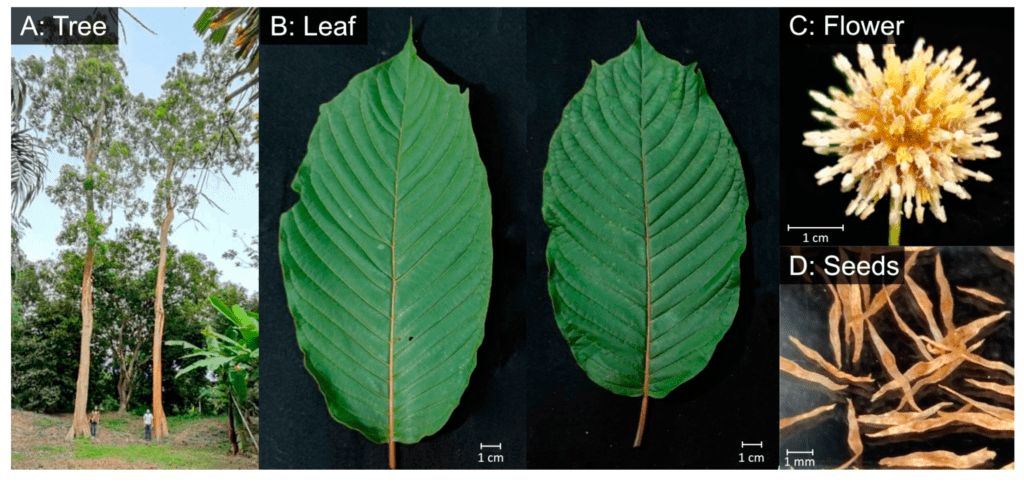
Figure 1 from Pootakham et al. (2022): Mitragyna speciosa morphology featuring (A) the tree’s overall growth, (B) leaf shape and venation, (C) flower details, and (D) seed size and structure.6
Specifically, Mitragyna speciosa12:
- Is an evergreen tree that can grow up to 25 meters in height with a diameter of 2 to 3 feet.
- Features a typically straight trunk with smooth and gray outer bark, while the inner bark presents a pinkish hue.
- Has twigs that are obtusely angulate.
- Leaves are usually elliptic and can range from ovate to obovate in shape, measuring 14–20 cm in length and 7–12 cm in width.
- Flowers are deep yellow, funnel-shaped, and typically have 12–15 pairs of veins.
- Fruits are 10-ribbed and measure 7–9 mm in length and 4–5 mm in width, containing numerous seeds.
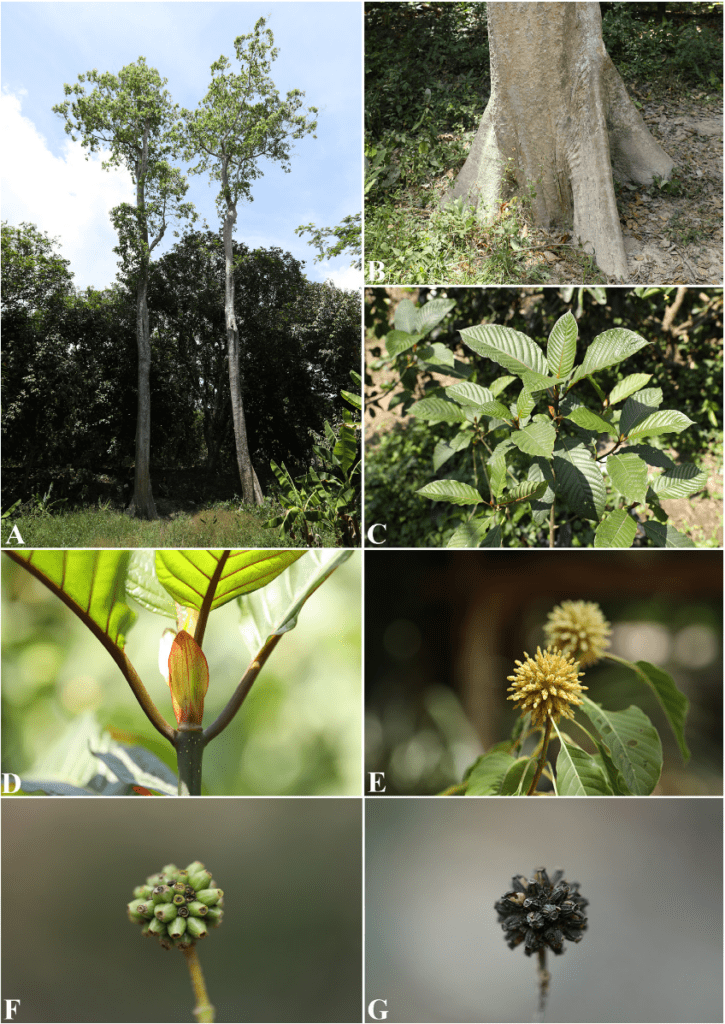
Figure 7 from Ngernsaengsaruay et al. (2022): Mitragyna speciosa (Korth.) Havil. showing (A) its habitat and growth habit, (B) the structural buttress, (C) leafy branches, (D) keeled interpetiolar stipules, (E) flowering heads, (F) fruiting head, and (G) dried fruiting head. Photographed by Chatchai Ngernsaengsaruay.4
The life cycle of Mitragyna speciosa and its influence on vein color is a complex interplay of genetics, environmental factors, and growth processes. The rich history of Mitragyna speciosa’s taxonomy and its detailed morphological characteristics allow for further exploration into how its life cycle may impact the unique properties of the plant.
The Mysterious Yellow Vein Kratom
Yellow Vein Kratom is a rare variety that has gained considerable attention within the kratom community for its distinct characteristics. Unlike the red, white, and green vein Kratom, which are named after their actual vein colors, yellow kratom does not have yellow veins in its natural state. Rather, this color is a result of a complex and confusing mix of specific harvesting and processing techniques coupled with inherent botanical and environmental factors. Some vendors sell yellow vein kratom as a blend of red and green vein kratom in specific ratios.
Tradition
The process by which yellow vein kratom is produced has been traditionally passed down through generations of cultivators in Southeast Asia. It is thought to involve a unique fermentation or drying process applied to white vein kratom. This extended drying process, which can take up to 15 days, triggers certain biochemical reactions that not only alter the color of the leaves but may also affect the alkaloid profile of the plant.
Biochemical Explanation
From a plant biology perspective, prolonged exposure to sunlight or UV radiation during drying could influence the metabolic pathways of the plant, leading to a shift in the synthesis of alkaloids. This aligns with the findings from the Zhang et al. (2022) study, which showed that changes in light exposure significantly affect alkaloid synthesis in Mitragyna speciosa. For yellow vein kratom, the specific processing methods employed might lead to light exposure variations, which in turn could influence its alkaloid composition, resulting in its unique color and properties.
The distinct processing of yellow vein kratom is also likely to induce other changes at a cellular level. For instance, the drying and fermentation process might trigger the breakdown of chlorophyll, the pigment responsible for the green color in plants. Concurrently, other pigments such as carotenoids and flavonoids, which are typically present in lower concentrations and masked by chlorophyll, might become more pronounced. These pigments can range in color from yellow to orange, potentially contributing to the unique hue of yellow vein kratom.
Blending of Red and Green Vein Kratom
Quite frequently, vendors blend white and red kratom strains and designate the resulting mixture as ‘yellow’. Drawing an analogy, it’s akin to combining red and green lights to produce a yellow hue. This blended kratom has gained traction due to its capacity to strike a balance between the energizing effects of some strains and the calming effects of others, resulting in a broader spectrum of effects.
Our understanding of the yellow vein kratom is currently limited, with most explanations being theoretical or based on anecdotal and vendor reports. Systematic scientific research is needed to validate these theories and uncover the precise biochemical and environmental factors behind this interesting kratom variant. Until then, the yellow vein kratom will continue to be a fascinating topic of discussion for researchers, kratom enthusiasts, and vendors alike.
Kratom Vein Colors – Beyond the Surface
Kratom vein colors are more than just visual markers. They’re influenced by a mix of botanical, environmental, chemical, and possibly genetic factors. Scientific studies offer varied views, highlighting the need for more conclusive research. The hands-on insights of those intimately involved in the Kratom industry, such as farmers and suppliers provide a unique perspective. Yellow vein kratom, a product of specialized processing, complicates our understanding further.
While environmental factors, notably light, are believed to affect vein colors, the specifics of their influence are still being explored. Other factors such as soil type and leaf maturity, also require further investigation. As research progresses, the ultimate aim is consistent: enhancing understanding for all from scientists to consumers.
- Suwanlert, S. (1975). A study of kratom eaters in Thailand. Bull Narc, 27(3), 21-7. PMID: 1041694.
- Sukrong, S., Zhu, S., Ruangrungsi, N., Phadungcharoen, T., Palanuvej, C., & Komatsu, K. (2007). Molecular analysis of the genus Mitragyna existing in Thailand based on rDNA ITS sequences and its application to identify a narcotic species: Mitragyna speciosa. Biol Pharm Bull, 30(7), 1284-8. doi: 10.1248/bpb.30.1284.
- Sengnon, N., Vonghirundecha, P., Chaichan, W., Juengwatanatrakul, T., Onthong, J., Kitprasong, P., Sriwiriyajan, S., Chittrakarn, S., Limsuwanchote, S., & Wungsintaweekul, J. (2023). Seasonal and Geographic Variation in Alkaloid Content of Kratom (Mitragyna speciosa (Korth.) Havil.) from Thailand. Plants (Basel), 12(4), 949. https://doi.org/10.3390/plants12040949.
- Ngernsaengsaruay, C., et al. (2022). Additional knowledge on the genus Mitragyna (Rubiaceae) in Thailand. Thai Forest Bulletin (Botany), 50(1), 20–39. https://doi.org/10.20531/tfb.2022.50.1.03.
- León, F., Habib, E., Adkins, J. E., Furr, E. B., McCurdy, C. R., & Cutler, S. J. (2009). Phytochemical characterization of the leaves of Mitragyna speciosa grown in U.S.A. Natural Product Communications, 4(7), 907-910. PMID: 19731590; PMCID: PMC9255435.
- Pootakham, W., et al. (2022). A Chromosome-Scale Genome Assembly of Mitragyna speciosa (Kratom) and Its Genetic Diversity in Thailand. Biology, 11(10), 1492. https://doi.org/10.3390/biology11101492.
- Zhang, M., Sharma, A., León, F., Avery, B., Kjelgren, R., McCurdy, C. R., & Pearson, B. J. (2022). Plant growth and phytoactive alkaloid synthesis in kratom [Mitragyna speciosa (Korth.)] in response to varying radiance. PLoS One, 17(4), e0259326. https://doi.org/10.1371/journal.pone.0259326.
- SERC Carleton. (n.d.). Plant Families. Retrieved from https://serc.carleton.edu/integrate/teaching_materials/food_supply/student_materials/805#:~:text=Plants%20that%20have%20similar%20flowers,pests%20(pathogens%2C%20herbivores).
- Wahid, A., Gelani, S., Ashraf, M., & Foolad, M.R. (2007). Heat tolerance in plants: An overview. Environmental and Experimental Botany, 61(3), 199-223.
- Ramirez-Estrada, K., Vidal-Limon, H., Hidalgo, D., Moyano, E., Golenioswki, M., & Cusido, R.M. (2016). Elicitation, an effective strategy for the biotechnological production of bioactive high-added value compounds in plant cell factories. Molecules, 21(2), 182.
- Guthrie, J. D. (1929). Effect of Environmental Conditions on the Chloroplast Pigments. American Journal of Botany, 16(9), 716–746. https://doi.org/10.2307/2435896.
- Raffa, R. B. (2014). Kratom and Other Mitragynines: The Chemistry and Pharmacology of Opioids from a Non-Opium Source. CRC Press.
- Biology Online. (n.d.). Photosynthesis, photolysis, and carbon fixation. Retrieved from https://www.biologyonline.com/tutorials/photosynthesis-photolysis-and-carbon-fixation.
- Geng, Y., Takatani, T., Hohenstein, E. G., & Sherrill, C. D. (2010). Accurately Characterizing the π−π Interaction Energies of Indole−Benzene Complexes. J. Phys. Chem. A, 114(10), 3576–3582. https://doi.org/10.1021/jp9099495.
- Schotte, C., Jiang, Y., Grzech, D., Dang, T. T., Laforest, L. C., León, F., Mottinelli, M., Nadakuduti, S. S., McCurdy, C. R., & O’Connor, S. E. (2023). Directed Biosynthesis of Mitragynine Stereoisomers. Journal of the American Chemical Society, 145(9), 4957-4963. DOI: 10.1021/jacs.2c13644.
Kreed Botanicals, based in the San Francisco Bay Area, CA, is more than just a kratom vendor. We position ourselves as a leading source of education in the kratom domain. Our focus extends beyond sales; we aim to provide consumers with a comprehensive understanding of kratom, from its scientific foundations to general benefits. Our team is is highly knowledgable about all things kratom, ensuring that our customers are both well-informed and confident in their product choices. With our efficient and discreet delivery system, we ensure that quality kratom, paired with reliable information, is readily accessible from the comfort of your home.
Disclaimer: This page is for general information and not to be considered as medical advice. This information is not intended to diagnose, prescribe, treat, or cure any medical condition. Kreed Botanicals and its editors do not provide medical advice.


